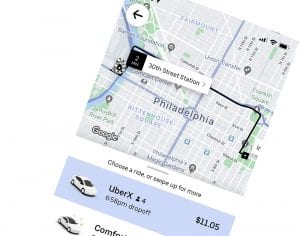Report describes sex crimes on Uber rides in last two years.
 Last week, I wrote about protecting yourself when using ride-hailing companies like Uber and Lyft to get around cities and towns while traveling. Since then, Uber published its U.S. Safety Report for 2017–2018.
Last week, I wrote about protecting yourself when using ride-hailing companies like Uber and Lyft to get around cities and towns while traveling. Since then, Uber published its U.S. Safety Report for 2017–2018.
The 84-page report is highly revealing. It details crimes that occurred during the 2.3 billion trips that U.S. Uber drivers took during the two years discussed in the report. We know that 99.9 percent of Uber’s rides ended without incident. We know that others had only minor safety issues, but we also know that too many Uber rides were ended by serious crimes committed against riders.
The report relates that 235 rapes took place during Uber rides in 2018. And, a total of 464 occurred during the two years documented in the report. That’s almost 20 per month.
The report details that more than 5,500 sexual assaults took place during Uber rides. The most common assault (3,000) being groping.
19 homicides related to Uber rides
The report states that 19 non-sexual assaults related to Uber rides ended as homicides during the two-year reporting period.
In the report, it states that Uber drivers were the victims of alleged attacks 45 percent of the time. In the case of rape, riders were the victims 92 percent of the time. More than 3,000 people reported sexual assaults related to their Uber rides in 2018.
It’s difficult to put these statistics in any kind of context. Lyft, the other major ride-hailing service in the U.S., promised to publish a report similar to Uber’s in May 2018. It still hasn’t been issued. Taxi data on crime in individual cities is sparse and no national data base on taxi criminal incidents exists at all.
Despite the lack of context, I find the statistics from Uber decidedly troubling. Does a rape per five million Uber trips distress you to no end too? Most rapes across the U.S. aren’t reported to law enforcement. At Uber, only 37 percent of the rapes reported to the company are reported by Uber to the police. The company says its policy is to abide by the victim’s decision about reporting crimes to police, but what does that mean?
READ ALSO: Know these 14 Lyft and Uber security rules
Uber left U.S. police in the dark about the extent of crime on rides
During the two-year period covered by the report, the police had no idea of almost 300 rapes. Rapists who perpetrated them were free to rape again and again. The policy never gave police a chance to interact with the victims. It never gave the police a chance to act on the victims’ behalf or their community.
Even while allowing Uber victims to direct whether their specific crimes were reported to police, Uber could have reported the aggregate crime statistics, without victims’ personal information. That would have been of significant help to law enforcement over the years. Until this report was released, many police departments were unaware of the scope of the sexual assault problem in the ride-hailing industry.
What does it say to their drivers when Uber doesn’t report known crimes? What does it say to the public? Uber did not report drivers who committed crimes. These drivers could then commit the same crimes over and over again?
Recent Uber safety improvements aren’t nearly enough
Uber has made major safety improvements to their service. Following initial driver background checks, they now perform continuous background checks. Uber says the ongoing checks have caused them to remove more than 40,000 of their drivers. While this is an improvement, it’s not nearly enough.
New safety features were added to its ride-hailing app. “Ride Check” sends a notification to drivers and riders if a stop lasts too long, asking if everything is okay. Uber added an in-app emergency button that can digitally share trip information with 911 dispatchers. A “Verify Your Ride” PIN number helps ensure passengers get into the correct vehicle. The driver can’t start the ride unless the rider tells them the PIN to enter it into the system for verification. Riders can use “Send Status” to share trip details with friends or family. While all these app-based safety features are helpful, they aren’t nearly enough.
Senator Richard Blumenthal said of the Uber safety report statistics, “These numbers represent a staggering systemic failure.” I agree with the Senator. The numbers in Uber’s U.S. Safety Report scream that Uber is failing its customers.
ALSO ON THE TRAVELERS UNITED BLOG: It’s time for travelers to help with human trafficking
Uber must upgrade driver vetting and police coordination
Uber continues to not provide the kind of comprehensive driver background checks that its riders deserve. Drivers should undergo extensive, fingerprint-based background checks and regular, unannounced drug testing.
It’s not enough for Uber to add app-based safety features when their driver vetting procedures continue to be deficient and their crime reporting insufficient. Uber must fulfill their obligation to the riding public. While comprehensive background checks and working more closely with the police won’t totally solve ride-hailing safety problems, it goes a long way to help Uber begin to regain the public trust.
After many years working in corporate America as a chemical engineer, executive and eventually CFO of a multinational manufacturer, Ned founded a tech consulting company and later restarted NSL Photography, his photography business. Before entering the corporate world, Ned worked as a Public Health Engineer for the Philadelphia Department of Public Health. As a well known corporate, travel and wildlife photographer, Ned travels the world writing about travel and photography, as well as running photography workshops, seminars and photowalks. Visit Ned’s Photography Blog and Galleries.



